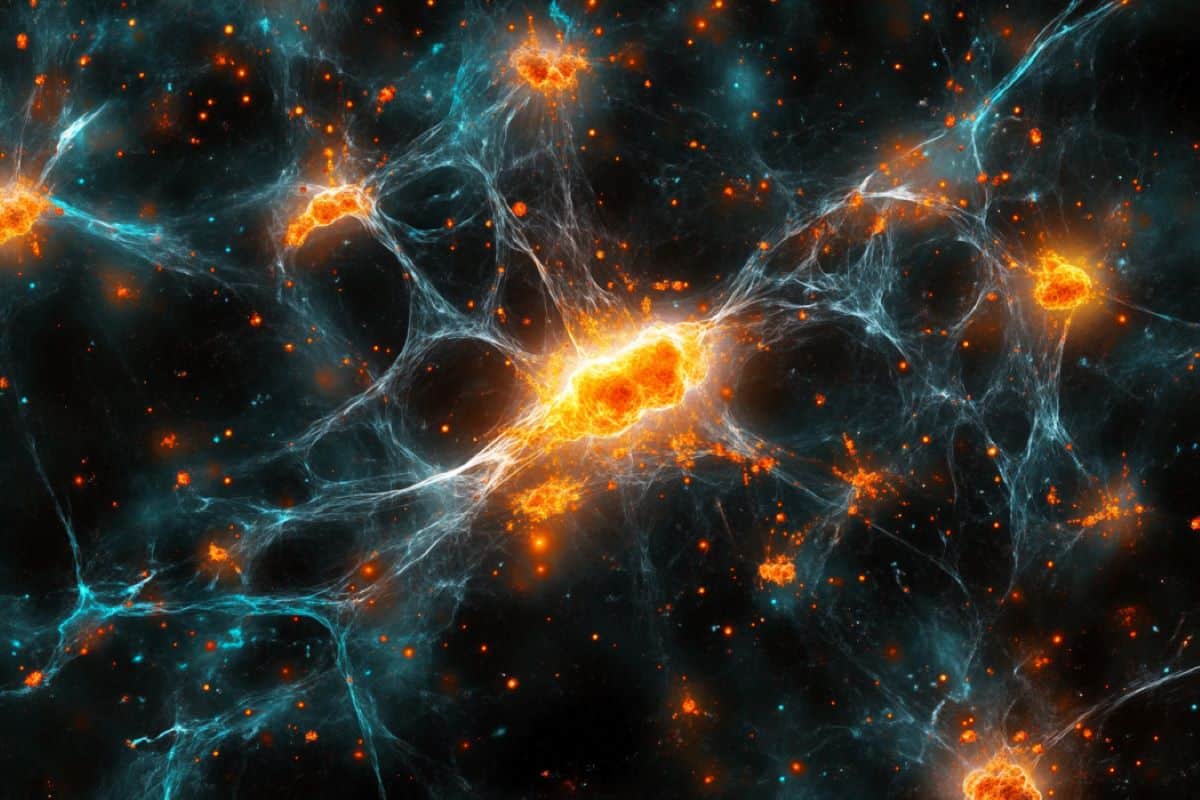Summary: Researchers have identified a novel therapeutic target for Alzheimer’s disease by focusing on astrocytes, non-neuronal brain cells involved in waste removal. They found that astrocytic autophagy clears amyloid-beta (Aβ) oligomers, toxic proteins in Alzheimer’s patients, and helps restore cognitive functions.
This discovery shifts focus from neurons to astrocytes in Alzheimer’s treatment and offers new avenues for drug development aimed at enhancing autophagy in these brain cells. The study marks a promising step toward developing therapies that slow or reverse Alzheimer’s disease progression.
Key Facts:
- Astrocytes can reduce amyloid-beta buildup and restore cognitive functions.
- Autophagy-associated genes in astrocytes help repair damaged neurons in Alzheimer’s.
- This research opens new paths for Alzheimer’s treatment, targeting non-neuronal cells.
Source: KIST
A research team led by Dr. Hoon Ryu from the Korea Institute of Science and Technology (KIST, President Sang-Rok Oh) Brain Disease Research Group, in collaboration with Director Justin C. Lee of the Institute for Basic Science (IBS, President Do-Young Noh) and Professor Junghee Lee from Boston University Chobanian & Avedisian School of Medicine, has uncovered a new mechanism involving astrocytes for treating Alzheimer’s disease (AD) and proposed a novel therapeutic target.
In this study, the researchers revealed that autophagy pathway in astrocytes (non-neuronal cells in the brain) removes amyloid-beta (Aβ) oligomers, the toxic proteins found in the brains of AD patients, and recovers memory and cognitive functions.

AD, a representative form of senile dementia, occurs when toxic proteins like Aβ, abnormally aggregate and accumulate in the brain, leading to inflammation and damage to neurons, causing the neurodegenerative disorders. Although the scientific community has long focused on the role of astrocytes in removing toxic proteins around neurons, the exact mechanism remains unclear.
Autophagy is a process by which cells break down and recycle their own components to maintain homeostasis. The research team scrutinized the autophagy process in astrocytes and discovered that when toxic protein buildup or inflammation occurs in the brains of AD patients, astrocytes respond by inducing genes that regulate autophagy.
By delivering these autophagy-associated genes specifically into astrocytes in AD mouse models, the researchers observed the recovery of damaged neurons.
This study demonstrated that astrocytic autophagy reduces Aβ aggregates (protein clumps) and improves memory and cognitive functions. Notably, when autophagy-associated genes were expressed in astrocytes of the hippocampus, a brain region responsible for memory, the neuropathological symptoms were decreased.
Most significantly, this study showed that the autophagy plasticity of astrocytes is involved in eliminating Aβ oligomers, a major cause of AD pathology, thus presenting a new potential therapeutic avenue for treating AD.
This research is particularly meaningful as it shifts away from the traditional neuron-centered approach in AD drug development, instead identifying astrocytes (non-neuronal cells) as a novel target for therapy.
The research team plans to further explore drug developments that can enhance the autophagic function of astrocytes to prevent or alleviate dementia symptoms, and to conduct preclinical studies in the near future.
Dr. Ryu and Dr. Suhyun Kim (the first author) commented, “Our findings show that astrocytic autophagy restores neuronal damage and cognitive functions in the dementia brain.
“We hope this study will advance our understanding of cellular mechanisms related to autophagy and contribute to future research on waste removal by astrocytes and health maintenance of the brain.”
Funding: This research was supported by the Ministry of Science and ICT (Minister Sang Im Yoo), under KIST’s Major Projects and the Mid-career Researcher Support Program (2022R1A2C3013138), and the Ministry of Health and Welfare (Minister Gyu-Hong Cho), under the Dementia Overcoming Program (RS-2023-KH137130).
About this Alzheimer’s disease research news
Author: Ryu Hoon
Source: KIST
Contact: Ryu Hoon – KIST
Image: The image is credited to Neuroscience News
Original Research: Open access.
“Astrocytic autophagy plasticity modulates Aβ clearance and cognitivefunction in Alzheimer’s disease” by Hoon Ryu et al. Molecular Neurodegeneration
Abstract
Astrocytic autophagy plasticity modulates Aβ clearance and cognitivefunction in Alzheimer’s disease
Background
Astrocytes, one of the most resilient cells in the brain, transform into reactive astrocytes in response to toxic proteins such as amyloid beta (Aβ) in Alzheimer’s disease (AD). However, reactive astrocyte-mediated non-cell autonomous neuropathological mechanism is not fully understood yet.
We aimed our study to find out whether Aβ-induced proteotoxic stress affects the expression of autophagy genes and the modulation of autophagic flux in astrocytes, and if yes, how Aβ-induced autophagy-associated genes are involved Aβ clearance in astrocytes of animal model of AD.
Methods
Whole RNA sequencing (RNA-seq) was performed to detect gene expression patterns in Aβ-treated human astrocytes in a time-dependent manner. To verify the role of astrocytic autophagy in an AD mouse model, we developed AAVs expressing shRNAs for MAP1LC3B/LC3B (LC3B) and Sequestosome1 (SQSTM1) based on AAV-R-CREon vector, which is a Cre recombinase-dependent gene-silencing system. Also, the effect of astrocyte-specific overexpression of LC3B on the neuropathology in AD (APP/PS1) mice was determined.
Neuropathological alterations of AD mice with astrocytic autophagy dysfunction were observed by confocal microscopy and transmission electron microscope (TEM). Behavioral changes of mice were examined through novel object recognition test (NOR) and novel object place recognition test (NOPR).
Results
Here, we show that astrocytes, unlike neurons, undergo plastic changes in autophagic processes to remove Aβ. Aβ transiently induces expression of LC3B gene and turns on a prolonged transcription of SQSTM1 gene. The Aβ-induced astrocytic autophagy accelerates urea cycle and putrescine degradation pathway. Pharmacological inhibition of autophagy exacerbates mitochondrial dysfunction and oxidative stress in astrocytes.
Astrocyte-specific knockdown of LC3B and SQSTM1 significantly increases Aβ plaque formation and GFAP-positive astrocytes in APP/PS1 mice, along with a significant reduction of neuronal marker and cognitive function.
In contrast, astrocyte-specific overexpression of LC3B reduced Aβ aggregates in the brain of APP/PS1 mice. An increase of LC3B and SQSTM1 protein is found in astrocytes of the hippocampus in AD patients.
Conclusions
Taken together, our data indicates that Aβ-induced astrocytic autophagic plasticity is an important cellular event to modulate Aβ clearance and maintain cognitive function in AD mice.






